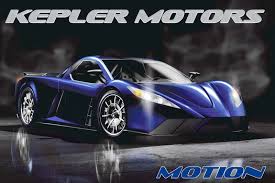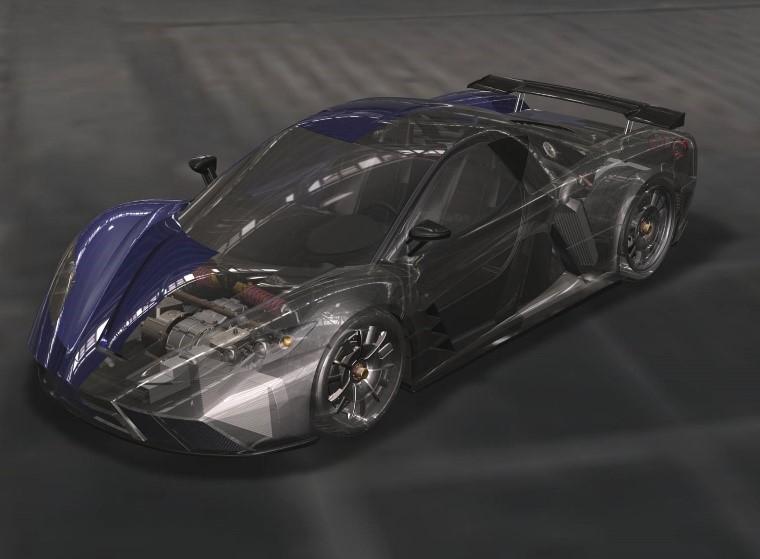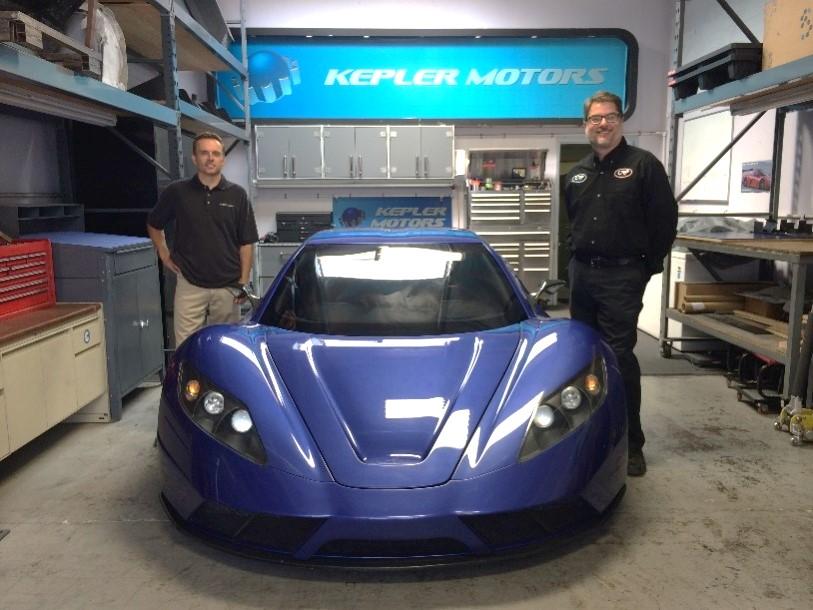 The new very limited edition ‘supercar’ from Kepler Motors, the MOTION, features 800 horsepower, a 550hp Twin-Turbo V6, and an all-wheel-drive system that launches it from zero to sixty in under 2.5 seconds—knocking your socks off with a top speed of over 200 mph. What’s really unique about the hand-assembled MOTION though is the engineering that went into making it.
The new very limited edition ‘supercar’ from Kepler Motors, the MOTION, features 800 horsepower, a 550hp Twin-Turbo V6, and an all-wheel-drive system that launches it from zero to sixty in under 2.5 seconds—knocking your socks off with a top speed of over 200 mph. What’s really unique about the hand-assembled MOTION though is the engineering that went into making it.
As the only living person to hold world speed records over 200 MPH on land and water, the founder of Kepler Motors, Russ Wicks, knows a thing or two about fast cars, no limits, and the right team for the job.
Not afraid to try something new, Wicks and the Kepler Motors team wanted to collaborate with engineers who possessed both Formula 1 experience and 3D printing experience. They found a perfect match in CRP Group, which is comprised of a number of different international divisions offering technological solutions to a wide client base spanning automotive, motorsports, design, aerospace, Unmanned Aerial Vehicles (UAVs), marine, entertainment, and packaging industries. In this capacity, they employed the CRP USA division and the CRP Meccanica division.
The CRP USA division is based in North Carolina—NASCAR country. They specialize in 3D printing, and also make on-car and wind tunnel components for racing teams, as well as parts for space. The Italy-based CRP Meccanica division is a high precision CNC machining company focusing on clientele in motorsports, automotive and other related industries.
The groups worked together as follows:
- CRP USA coordinated with Kepler, all of CRP Group, as well as the design consultants.
“We partnered with CRP Group and their network of companies because they are experts in F1 and know how to apply additive manufacturing to the overall design process,” said Kepler Motors Engineering Director Derk Hartland. “Being able to leverage the knowledge of Stewart Davis and his team was critical to the rethinking how we designed our upright.”
- CRP Meccanica provided cooperative design expertise for the uprights, as well as 3D printing expertise, rapid casting, and precision CNC machining.
“CRP Meccanica was a pivotal part of our design process,” said Hartland. “Cast titanium is an art form and it requires expertise and experience to create an optimal part. The companies of CRP Group were very helpful, professional and a pleasure to work with throughout the entire project.”
In this particular design, for yet another of his revolutionary vehicles, Wicks and the engineers knew they wanted to incorporate additive manufacturing for the MOTION’s low-run parts, but the further they got into project design, it became obvious to the engineers that 3D printing could also be used to make the cast titanium upright due to their capability to make 3D printed patterns for investment casting. This allowed the team to go back to the drawing board somewhat more progressively, with a revision to their original design and plan. They wanted a strong, sleek, lightweight vehicle.
“It is very common for a company to rethink their design as soon as they understand the potential with 3D printing,” said Stewart Davis, Director of Operations, CRP USA. “Once an engineer understands the possibility of manufacturing highly complex designs and shapes using additive manufacturing technology and applications, shapes that could not be manufactured by traditional processes, they begin designing without limitations. By combining 3D printing, rapid casting and precision CNC machining, engineers can think outside of traditional manufacturing methods and design complex, intricate parts.”
Derk Hartland wanted to create a groundbreaking design without the distraction of previous designs and limitations, so he focused on engineering the hypercar from the inside out. The Kepler Motors Design Team knew making the car they had in mind would take some different, more progressive production methods.
The MOTION features:
- Carbon fiber composite monocoque chassis and body
- F1 style double wishbone
- Pushrod suspension with cast titanium uprights
The unique cast titanium uprights connect the wheel and half-shafts to the wishbones, one of the most complex and critical parts of the car. Strength and weight are critical to its unique suspension system, along with a complex and secure shape.
“Working with CRP Meccanica allowed us to streamline the process. Using their laser sintering additive manufacturing technology to 3D print the pattern for casting the upright in titanium allowed us to design an optimal lightweight and strong part with no compromises,” said Russ Wicks. “CRP Meccanica managed the entire production process–design to end part. They took the 3D printed upright patterns to the foundry, cast the upright patterns in titanium, precision CNC machined the titanium uprights, conducted the FEA analysis and inspected the final uprights. The results were better than we could have imagined.”
The MOTION was originally debuted at the Dubai International Motor Show in December of 2009. Only 50 of the hand-assembled cars will be produced and delivered to their owners in 2014. The ‘exclusive and elite group of individuals’ who own these cars will be rewarded with vehicles that are engineering masterpieces, created by engineers not afraid to use new, advanced technology for a vehicle which Kepler Motors presents as ‘not just a supercar, but a hypercar.’
Let’s hear your thoughts on yet another amazing use for 3D printing in the Kepler Motors MOTION forum thread at 3DPB.com.
Subscribe to Our Email Newsletter
Stay up-to-date on all the latest news from the 3D printing industry and receive information and offers from third party vendors.
You May Also Like
3D Printing Unpeeled: Wind Turbines, Probiotics and Lenses
TPI Composites, ORNL and Ingersoll Rand are working to make wind turbine tooling segments that can be 18.3 meters long. These elements also include resistive wires that help keep the...
3D Printing Unpeeled: Digital FDM Filament for Functional Gradients
Just published in Nature, a paper by a Seoul National University team looks at “3D printing with a 3D printed digital material filament for programming functional gradients.” Sang-Joon Ahn, Howon...
3D Printing Unpeeled: $5000 Cold Spray 3D Printer, Roland DGA & Living Materials
The AeroForge is a $5000 cold spray metal printer for copper made by a student team at Rice University. In a paper for ACS Central Science a team from Nanjing...
3D Printing Webinar and Event Roundup: April 28, 2024
In this week’s 3D Printing Webinar and Event Roundup, the Ceramics Expo is taking place in Michigan, Stratasys continues its advanced training courses, and SPE is holding a Polymer Characterization...


































